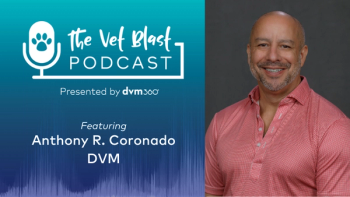
Paying it forward with wildlife cases
National Report-Most veterinrians have treated injured wildlife brought into their clinics.
National Report — Most veterinarians have treated injured wildlife brought into their clinics.
And most DVMs won't turn these cases away (unless restricted to do so by endangered species laws). But how does one manage the burden of taking on cases when there is no owner willing to pay? What restrictions are there on what kind of care can be provided in the average practice?
DVM Newsmagazine posed this question to several wildlife veterinarians, especially as strong weather events often signal an influx of wildlife injuries.
According to Dr. Dan Forman of Spring Creek Animal Hospital in Jackson, Wy., there are limited funds to defray the costs of treating injured wildlife, but there are many other rewards to taking on this humanitarian work.
"You have to have a love for working with wildlife, and that has to be the number one priority," says Forman, who is no stranger to wildlife cases. In fact, he helped found the Teton Raptor Center about four years ago and now serves on the nonprofit's board and as its staff veterinarian. He also serves as the staff veterinarian for the Wyoming Wetlands Society and on the Board of Directors for Teton County Board of Public Health.
Financial support for veterinarians who take on wildlife cases could come from Good Samaritans or government agencies, although the latter option is unlikely, he says.
"If you start anticipating or expecting financial assistance, you will be disappointed," Forman says. "A big part of it is giving back to the profession and kind of paying it forward. That's the essence of working with wildlife."
At his practice, Forman says he sometimes will mention to an individual who brings in injured wildlife that it's a financial hardship to treat the animal and that he is taking the case on pro-bono. Typically, 20 percent to 50 percent of those Good Samaritans will make a donation, he says.
"Sometimes that donation is $20. I also had a client of mine who was here with a dog when a Great Horned Owl came in that was injured who donated $400," he says. "There's a great deal of variability. But I expect to take a financial loss ... you have to want to do it for internal satisfaction."
But there are other benefits for practitioners willing to treat wildlife, Forman says. A lot of goodwill is generated for his practice throughout the community because of the pro-bono work at his clinic and his work with the Teton Raptor Center.
"There are financial hardships to the practice up-front, but there is so much goodwill generated in the community," he says. "I have people stop me in the street to ask me how a particular patient is doing."
Forman says clients and community members spread positive messages about his work around town, and it brings in a lot of new customers to his practice.
But overall, Forman says, it is personal satisfaction for helping an injured animal in need that drives his efforts.
"I feel honored to be able to work on these patients that come in," he says. "There are times when I have multiple patients come in during a week, and it's a challenge cost-wise. But I try to look past that."
His reputation as a veterinarian who will take on wildlife cases and his work at the raptor center have increased his caseload over the last several years, but Forman says it's not unusual for him to see 10 to 15 pro-bono wildlife cases each month.
And while his practice is not large enough to justify itemizing his taxes for Wyoming, Forman says practitioners can check with their accountants to see whether their state allows them to "write off" wildlife work as a way to try and recoup some of their losses.
"But that's one of those uphill battles. You have to be willing to accept wildlife to come in to treat because of the love and not because of the money," Forman says. "And if you can offset or defray some of the costs incurred, I'm happy. I've continually lost money. The rest of the practice helps subsidize my passion."
Dr. Colin Gillin of the Oregon Department of Fish and Wildlife and president of the American Association of Wildlife Veterinarians agrees that there are probably few governmental agencies that would provide compensation to veterinarians who treat wildlife. He says individual donations are probably a practitioner's best hope.
"For routine wildlife that are brought in, unless someone's providing a donation, it's not going to be covered by anyone else," Gillin says.
Most rehabilitators have to be sponsored by a veterinarian, so there may be opportunities for payment there, as many rehabilitators may solicit grants and donations for their work and to cover their costs. But veterinarians caring for wildlife usually do so at their own expense, he says.
But aside from the cost of providing wildlife care, Gillin says veterinarians must also be aware that there are rules governing how much care an average practitioner can provide to injured wildlife.
"All private practitioners at some time or another treat wildlife at some level, whether they euthanize them or actually do treatments," he says. "Some veterinarians are more involved. But just because we have a veterinary degree, it doesn't cover all the knowledge that's needed for treating wildlife, particularly holding and caring for wildlife."
Some states will regulate wildlife care—maybe not in their veterinary practice acts—and only allow veterinarians to provide immediate treatment. Oregon, for example, does not allow veterinarians to provide long-term care or rehabilitation without a permit—which requires additional training and extensive testing.
"Just because you may know how to set a bone or you may know fluid therapy or you may know a lot of things for birds, mammals, whatever, the actual care and food habits, environmental care is different for wild animals," Gillin says. He suggests veterinarians who do take in wildlife learn about the nutritional needs of some of their native species, and work to avoid habituating the animal to people.
"Limit visual contact with humans. Get them to where they are feeding them, but not conditioning them to being fed by people," he says.
Dr. Florina Tseng, director of the Tufts Wildlife Clinic, says there are federal laws governing the care of migratory birds, limiting veterinarians to a 48-hour window for treatment.
But in some states, she says veterinarians who are interested in doing so can easily obtain a rehabilitation permit without taking an exam if they meet other requirements, such as providing a proper habitat.
For veterinarians who want to do more or need help with a case, Forman says there are a lot of ways to get involved in wildlife care.
"There are tremendous resources out there. Most veterinary schools gave wildlife clinics, and they welcome veterinarians to get into wildlife medicine. There are also a lot of wildlife programs," he says. "Don't ever feel like there isn't a safety net ... there's people out there who can help."
Local nonprofit wildlife centers or veterinary colleges may be able to help with a case, he says.
Newsletter
From exam room tips to practice management insights, get trusted veterinary news delivered straight to your inbox—subscribe to dvm360.





